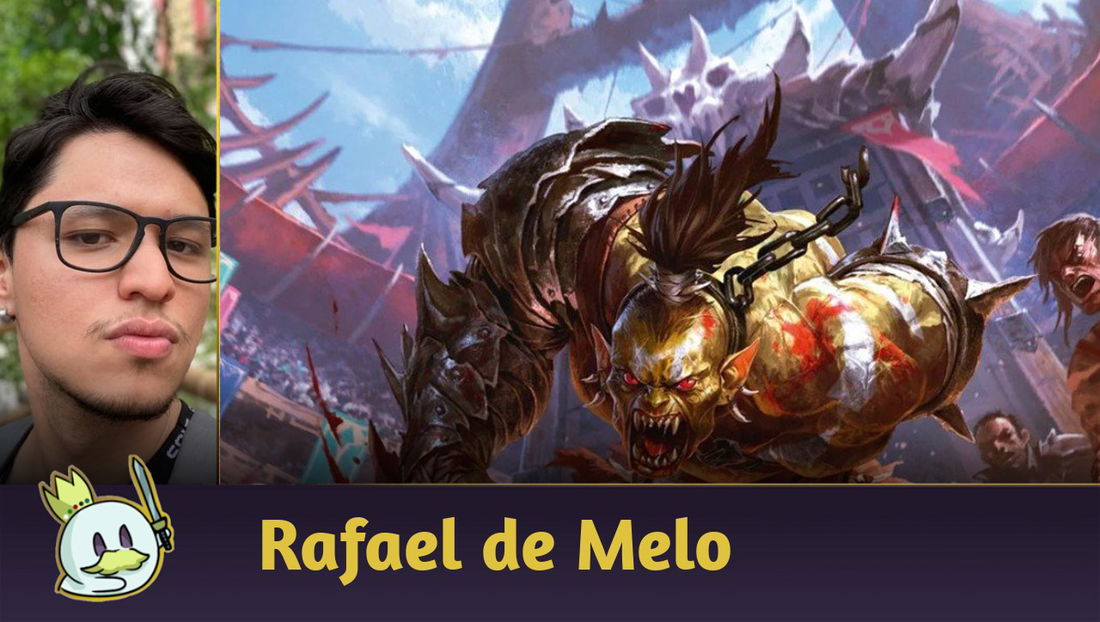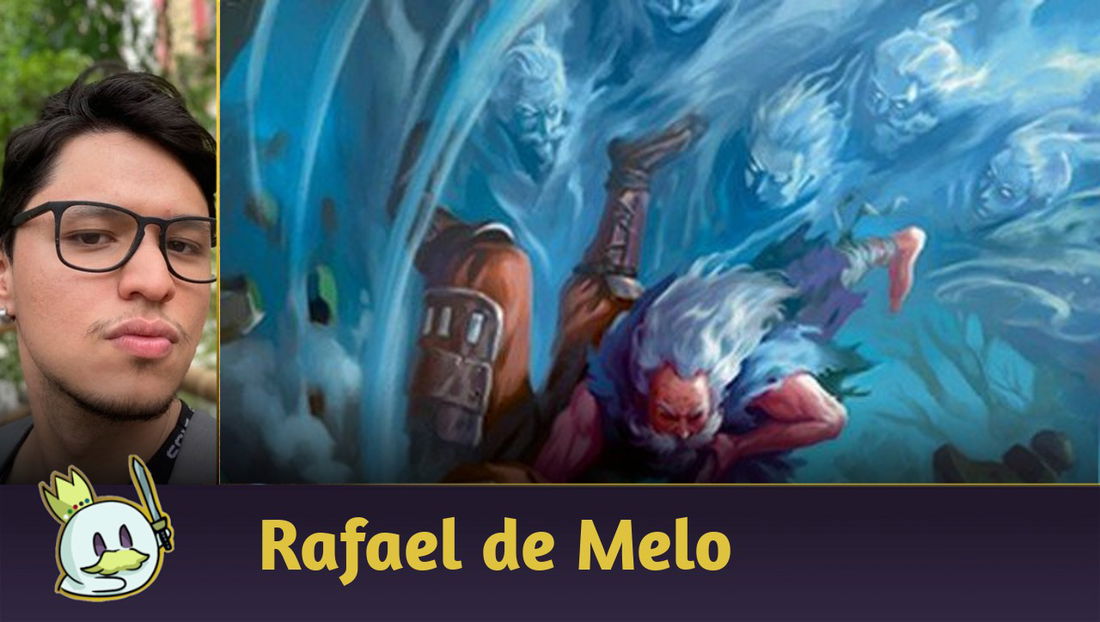Flesh and Blood has been considered the best competitive TCG today. After all, its mix of mechanics, its excellent structure of tournaments and the active support of Legends Story Studios (LSS) for the game have given notable results in its growth.
However, the debate regarding introductory formats remains raging, and while some recommend that players go to Blitz first while others consider it better to start straight with Classic Constructed, a third strand has grown in the community and become a point of interest for beginners and also a great way to practice deckbuilding - Commoner
In this article, we present more about the format and specify the main reasons for beginners or experienced players to give Commoner a try!
After all, what is Commoner?
Commoner is a casual format in Flesh and Blood where players can only use common cards in their decks and common or rare heroes and equipment.
A Commoner deck must comply with the following deckbuilding rules:
Commoner's Banlist
The following cards are Banned from the Commoner format in June 2024:

Stubby Hammerers was banned from the format because it greatly facilitated the possibility of playing go wide in the format, making it too efficient for Ninjas, Runeblades and other aggressive classes.
Amulet of Ice (3) was banned along with Stubby Hammerers to prevent Iyslander from having the ability to invalidate opponents' defensive plays, in the expectation that slower archetypes would gain more space in the Metagame.
Belittle (1) and Ball Lightning (1) were banned for being very efficient cards and too strong for the format, just as they also proved too strong for Blitz and Classic Constructed.
What is Commoner's Metagame like?
Due to the low number of tournament results available today, Commoner does not have a broadly defined Metagame, but some circumstances and the position of heroes in the format are common sense for many players and content creators.

An almost unanimous consensus is that Ira, Crimson Haze is the best deck in the format. The Welcome Deck heroine has an easy-to-use ability and can be built in very different ways - whether with a pile of goodstuff from the best cards in the format, or with the most recent versions focused on Crouching Tiger.
Ira is also the only heroine in the game to have access to her specialization in the format, Whirling Mist Blossom which puts her one step ahead of other decks.

Iyslander is also considered one of the best decks in the format and the main Arcane archetype in Commoner, and just like its Blitz version, her moves have disruptive effects that make it very difficult for some heroes to play and/or sequence its attacks, punishing greedy hands while forcing the rest of the format to play with Nullrune gear to protect themselves.

Dash has an extremely aggressive stance in Commoner that makes it highly consistent and one of the main Aggro decks in the format. Her combination of Boost with efficient attacks puts her in a privileged position where she takes advantage of the low availability of more defensive equipment in the Metagame.

Bravo also stands out in the format for its ability to defend well and attack strongly, mitigating the lack of defensive equipment while also taking advantage of the Crush and Dominate skills to make the most of its attacks, being also an excellent meta call for the above decks if it is well constructed.
Cards Realm has a Commoner's Tier List produced in 2023, and some updates with recent expansions include:

The heroes from Heavy Hitters were supported and proved good enough for the Commoner, all of which are viable options for tournaments or even to compete against the best decks in the format.

Nuu has been widely considered as an excellent Assassin for the current Metagame due to her interaction with blue cards and the winrates of the public lists seem to confirm the speculations so far, but the heroine still needs to pass the test of time and the adaptation of the format to be considered a competitor in the higher Tiers.

Enigma has broken the stigma that Illusionist can't compete with Commoner by granting an easy to build around heroine with a strong enough ability and game plan to fatigue opponents.
What are the disadvantages of Commoner?
The main disadvantage of Commoner today is the fact that there is no Living Legend score for the format due to its more casual content, which ends up making its Metagame more static than other formats and leaving players to stay at the mercy of meta calls and/or the launch of new heroes, or heroines that can, with their mechanics, cause significant changes in the competitive scene.
Due to its more aggressive nature and low availability of stronger cards, some strategies arent't that great in Commoner, especially those involving most Illusionists such as Dromai and Prism, and heroes of other rarities, such as Emperor, Dracai of Aesir, are illegal.
Finally, there are players who complain that the Commoner's low power level, where there are no specializations or Rares, makes the format more uninteresting than its Blitz and Classic Constructed variants or even other community-driven formats, such as Clash, which has its own rules system.
Reasons to play Commoner on Flesh and Blood
It is a very cheap format
Compared to Blitz or Classic Constructed, Commoner decks are extremely cheap and the availability of most cards is very high because players are always opening boosters and/or boxes to pull the Majestics and Legendaries they need - so it's easy to get the common singles for a very low price.
Due to its budget nature, Commoner allows you to try out many heroes and build many decks in different ways, allowing to try out new classes and archetypes to later also decide which hero might be interesting for the player to assemble in Blitz and/or in Classic Constructed.
It's an excellent way to introduce new players to Flesh and Blood
Just like precon Blitz decks, Commoner is an excellent way to introduce new players to Flesh and Blood, introducing them to the heroes and giving them an environment where tournaments and events aimed at this audience can take place while, unlike precons, it allows players to exercise deckbuilding - whether they are newbies and/or more experienced people looking for a new way to enjoy the game.
Support from local stores and/or organizing independent events is essential to keeping Commoner, which doesn't have competitive support from LSS. And creating this “gateway” environment for Flesh and Blood is essential to keeping the game alive and creating a good entry format to their respective communities.
It is a format that exercises Meta Call
The lack of competitive support even means that LSS hasn't created and doesn't appear to have any intention of creating a Living Legend system for the Commoner. Therefore, the format's Metagame tends to become more static and very focused on the local environment instead of creating a “global village” where players try to build the best deck and/or always use the winning list of a major event.
This regionalized nature and the general notion that the format's Metagame will not change with Living Legends makes the Commoner much more passive to meta calls, that is, the need to use a certain combination of cards and/or decks to have more chances against the predominant strategies and, consequently, creating a rock-paper-scissors environment or forcing the predominant deck to adjust to the rest of the format.
It fixes the Blitz's biggest controversy
With a poolof extensive cards that include several staples that are also playable in Classic Constructed, Blitz suffers from recurring complaints from some players about how some matches are completely unbalanced by the explosive damage potential that some heroes can have - and how this dynamic ruins the symmetry of the format and/or makes heroes become Legends rapidly.
By significantly limiting the availability of cards and cutting some of the most powerful staples, Commoner manages to create an environment where damage, despite being slow and still occasionally punishing due to the lack of good defensive equipment, is much less polarized and revolves much more around of attrition exchanges, with longer game durations.
Conclusion
Commoner is an ideal format for building communities around beginners and for players who want to try Flesh and Blood without necessarily having to completely go through the more competitive side of the game.
Store-based support, independent organizers and content creators help keep the scene fresh and create an inviting environment that can later also introduce players to other formats of the game, where more powerful mechanics and equipment make its dynamics more interesting. .
Thanks for reading!













— Comentarios 0
, Reacciones 1
Se el primero en comentar